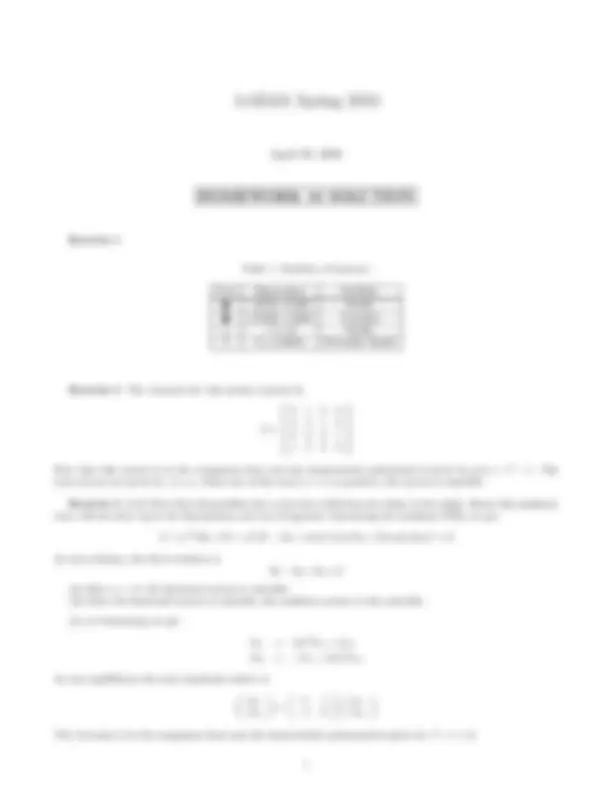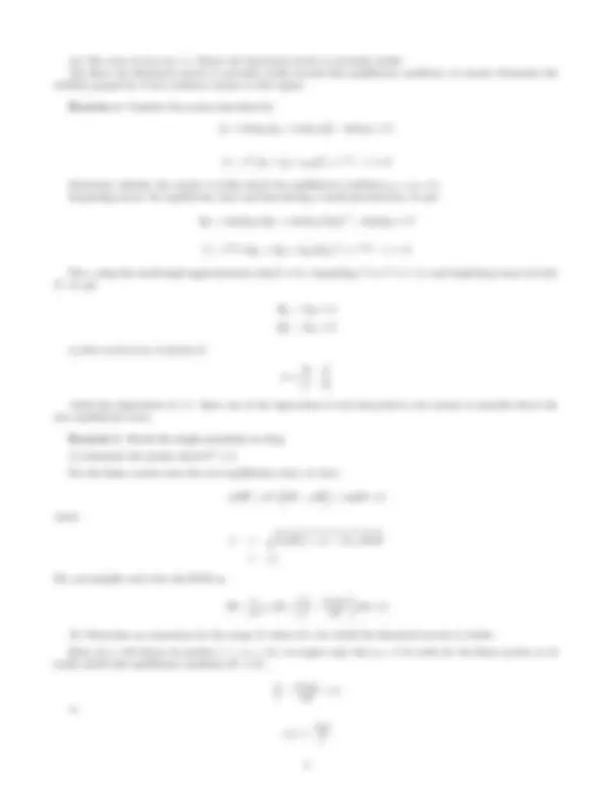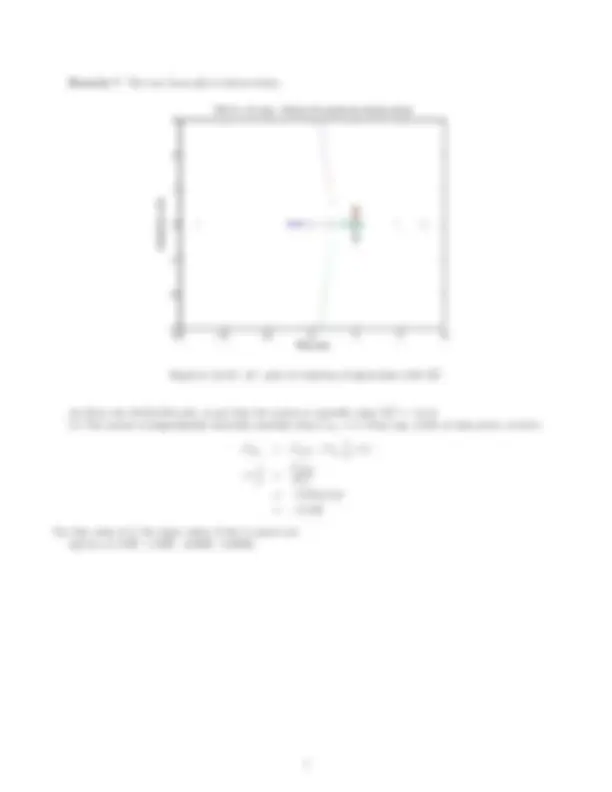








Study with the several resources on Docsity

Earn points by helping other students or get them with a premium plan


Prepare for your exams
Study with the several resources on Docsity

Earn points to download
Earn points by helping other students or get them with a premium plan
Community
Ask the community for help and clear up your study doubts
Discover the best universities in your country according to Docsity users
Free resources
Download our free guides on studying techniques, anxiety management strategies, and thesis advice from Docsity tutors
Material Type: Assignment; Class: Flight Dynamics And Control; Subject: AAE-Aero & Astro Engineering; University: Purdue University - Main Campus; Term: Spring 2011;
Typology: Assignments

Limited-time offer
Uploaded on 04/27/2012
4.8
(18)10 documents
1 / 10

This page cannot be seen from the preview
Don't miss anything!








On special offer
April 4, 2011
AAE421 Spring 2010
HOMEWORK 10 SOLUTION
Exercise 1
Table 1: Stabiltiy of Systems.
Part Eigenvalues Stability ♠ -2.618, -0.382 Stable ♣ -2.3028, 1.3028 Unstable ♦ − 1 ± 2 i Stable ♥ 0 ± 2. 8284 i Neutrally Stable
Exercise 2 The A-matrix for this system is given by
Note that this matrix is in the companion form and the characteristic polynomial is given by p(s) = s^4 − 1. The roots of p(s) are given by ± 1 , ±i. Since one of the roots (s = 1) is positive, the system is unstable.
Exercise 3 (a)(i) Note that this problem has a | y˙| y˙ term which has zero slope at the origin. Hence this nonlinear term will not show up in the linearization and can be ignored. Linearizing the nonlinear ODE, we get
(1 + ye^2 )δ y¨ + δ(1 + y^2 )¨ye^ − δ y˙ + cos ˙ye^ cos yeδy + δ(cos ˙y) sin ye^ = 0
At zero solution, the above reduces to δ y¨ − δ y˙ + δy = 0 (ii) Since a 1 < 0, the linearized system is unstable. (iii) Since the linearized sysetm is unstable, the nonlinear system is also unstable.
(b) (i) Linearizing we get
δ x˙ 1 = 3 xe 12 δx 1 + δx 2 δ x˙ 2 = −δx 1 + 3xe 22 δx 2
At zero equilibrium the state equations reduce to
( δ x˙ 1 δ x˙ 2
δx 1 δx 2
The A-matrix is in the companion form and the characteristic polynomial is given by s^2 + 1 = 0.
(ii) The roots of p(s) are ±i. Hence the linearized system is neutrally stable. (iii) Since the linearized system is neutrally stable around this equilibrium condition, we cannot determine the stability properties of the nonlinear system in this region.
Exercise 4 Consider the system described by
y¨ 1 + sin(y 2 )¨y 2 + cos(y 1 ) ˙y^22 − sin(y 2 ) = 0
(1 − ey^1 )¨y 1 + ¨y 2 + y 2 y˙^21 + e−y^1 − 1 = 0
Determine whether the system is stable about the equilibrium condition y 1 = y 2 = 0. Expanding about the equilibrium state and introducing a small perturbation, we get
δ y¨ 1 + sin(δy 2 ) δ ¨y 2 + cos(δy 1 )(δ y˙ 2 )^2 − sin(δy 2 ) = 0
(1 − eδy^1 ) δ ¨y 1 + δ y¨ 2 + δy 2 (δ y˙ 2 )^2 + e−δy^1 − 1 = 0
Now, using the small angle approximation (sin(δ) ≈ δ), expanding eδ^ to eδ^ ≈ 1 + δ, and neglecting terms of order δ^2 , we get
δ y¨ 1 − δy 2 = 0 δ y¨ 2 − δy 1 = 0
so that we have an A matrix of
which has eigenvalues of ±1. Since one of the eigenvalues is real and positive, the system is unstable about the zero equilibrium state.
Exercise 5 Recall the simple pendulum in drag. (a) Linearize the system about θe^ = 0. For the linear system near the zero equilibrium state, we have
mlδ θ¨ + κV
lδ θ˙ − ωδθ
where
V =
l^2 (δ θ˙)^2 + ω^2 − 2 l ω δθ δ θ˙ = |ω|
We can simplify and write the EOM as
δ θ¨ +
κ m |ω| δ θ˙ +
g l
κ|ω|ω ml
δθ = 0
(b) Determine an expression for the range of values of ω for which the linearized system is stable. Since (^) mκ |ω| will always be positive (−→ a 1 > 0), we require only that a 0 > 0 in order for the linear system to be stable about this equilibrium condition (θe^ = 0):
g l
κ|ω|ω ml
or
ω|ω| <
mg κ
val =
-0.0181 + 0.2587i 0 0 0 0 -0.0181 - 0.2587i 0 0 0 0 -3.3250 + 1.7334i 0 0 0 0 -3.3250 - 1.7334i
Phugoid Period: T = 24.2880 seconds
Short Period: T = 3.6248 seconds
0 50 100 150 200 250 −
−0.
0
1
Time (s)
δV (ft/s)
Glide, δx in Phugoid ev direction, by TA nonlin lin
0 50 100 150 200 250 −0.
−0.
−0.
0
Time (s)
δα
(deg)
Glide, δx in Phugoid ev direction, by TA nonlin lin
0 50 100 150 200 250 −0.
−0.
0
Time (s)
δθ
(deg)
Glide, δx in Phugoid ev direction, by TA nonlin lin
0 50 100 150 200 250 −0.
−0.
0
Time (s)
δq (deg/s)
Glide, δx in Phugoid ev direction, by TA nonlin lin
Figure 2: hw10 - p6 - δx in phugoid mode eigenvector direction from the glide equilibrium conditions
0 50 100 150 200 250 −0.
−0.
−0.
0
Time (s)
δV (ft/s)
Glide, δx in Short ev direction, by TA
nonlin lin
0 50 100 150 200 250 −
−
−
−
−
−
0
2
Time (s)
δα
(deg)
Glide, δx in Short ev direction, by TA
nonlin lin
0 50 100 150 200 250 −
−
−
−
−
0
2
Time (s)
δθ
(deg)
Glide, δx in Short ev direction, by TA
nonlin lin
0 50 100 150 200 250 −
0
10
20
30
40
50
Time (s)
δq (deg/s)
Glide, δx in Short ev direction, by TA nonlin lin
Figure 3: hw10 - p6 - δx in short mode eigenvector direction from the glide equilibrium conditions
vec =
0.4034 + 0.1271i 0.4034 - 0.1271i -1.0000 -1. 0.1839 + 0.1812i 0.1839 - 0.1812i 0.0003 - 0.0000i 0.0003 + 0.0000i 0.1560 + 0.0813i 0.1560 - 0.0813i 0.0009 + 0.0062i 0.0009 - 0.0062i -0.8506 -0.8506 -0.0013 + 0.0001i -0.0013 - 0.0001i
val =
-4.2875 + 2.2354i 0 0 0 0 -4.2875 - 2.2354i 0 0 0 0 -0.0195 + 0.2000i 0 0 0 0 -0.0195 - 0.2000i
Phugoid Period: T = 31.4188 seconds
Short Period: T = 2.8108 seconds
Exercise 7 The root locus plot is shown below.
−20 −15 −10 −5 0 5 10
−
−
−
0
1
2
3
Real axis
Imaginary axis
FW 10 − Ex 4(a) − Roots of A−matrix for various x/cbar
Figure 6: hw10 - p7 - plot of variation of eigenvalues with x
cm ¯c
(b) From the MATLAB code, we get that the system is unstable when x
cm ¯c =^ −^0.^14 (c) The system is longitudinally statically unstable when CMα = 0. From eqn. (3.32) of class notes, we have
CMα = CM (^) αR − CLα
x ¯c
x ¯c
CM (^) αR CLα = − 0. 613 / 4. 41 = − 0. 139
For this value of x ¯c , the eigen values of the A matrix are eig(A)=[-7.1842 -1.0927 -0.0630 -0.0000].